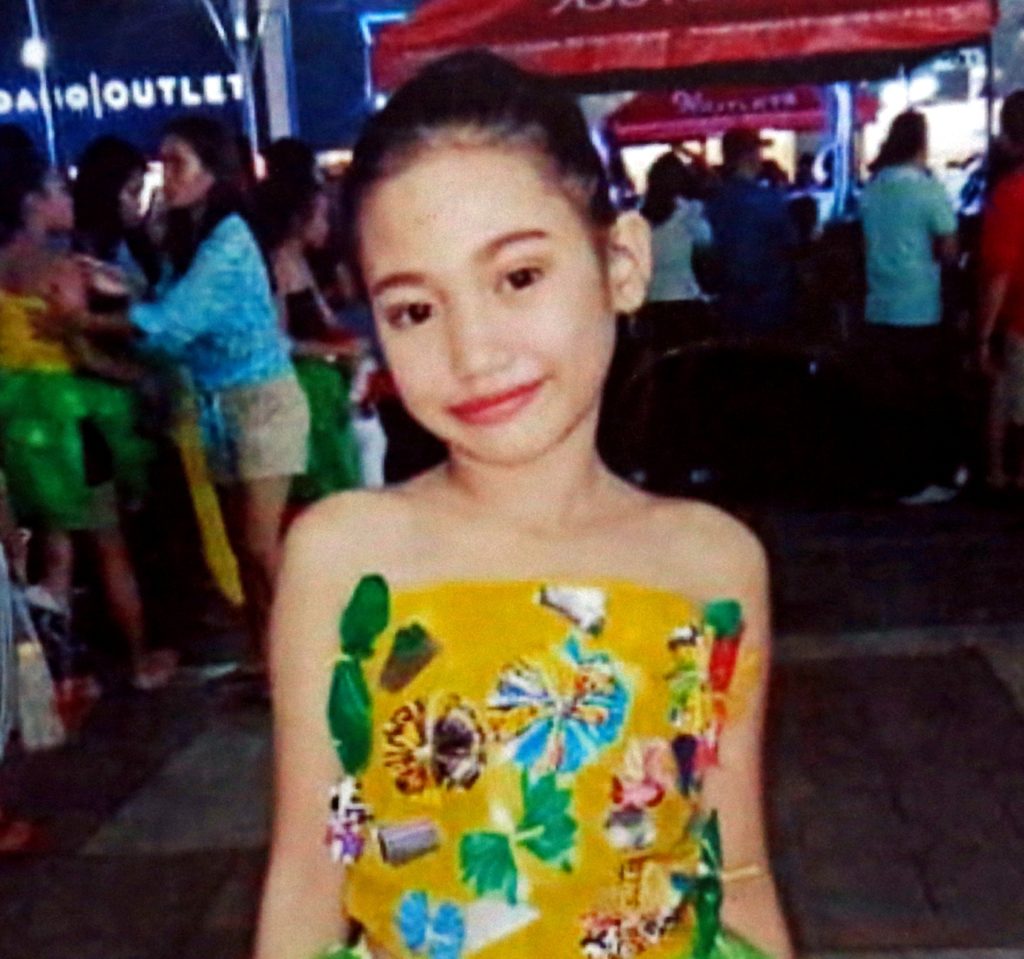
Trishanne Casona wears a happy smile as she attends a school activity in this photo provided to Cebu daily news by her mother Marilyn.
THE family of a 10-year-old recipient of Dengvaxia vaccine from Lapu-Lapu City who died last June 21 has sought the assistance of the Public Attorney’s Office (PAO) forensic expert to determine the cause of the child’s death.
If proven that her daughter died due to the vaccine she received in July last year, Marilyn Casona said she will file the appropriate charges against those responsible for what she suspected was an error in the dengue immunization program.
“Gusto lang namo matagaan og hustisya ang among anak (We only want to get justice for our daughter),” she said.
The remains of her daughter Trishanne was exhumed from her tomb at the Humay-humay Public Cemetery in Lapu-Lapu City on Friday for an
autopsy.
Dr. Erwin Erfe, the forensic expert of PAO, was quoted as saying that based on his examination, the girl suffered from severe bleeding in the brain.
“The bleeding was really very extensive. In fact, the hemorrhage wasn’t just in one part of the brain. Almost all parts of her brain bled. Now, we have to find out what caused her brain to bleed that way,” he said in a video posted in an online forum of the families of children who died after receiving Dengvaxia vaccines in the country.
Trishanne was the fifth reported death in Cebu of a child who got the anti-dengue vaccine.
Cebu Daily News on Saturday tried but failed to reach Dr. Jaime Bernadas, the director of the Department of Health in Central Visayas (DOH-7), for comment.
Sudden death
Casona, a resident of Barangay Basak, Lapu-Lapu City, said her daughter’s death was unexpected and heart breaking as the child had so much dreams she wanted to achieve.
Even as health authorities were still to determine the cause of Trishanne’s death, Casona already believed her daughter died because of the Dengvaxia vaccine she received.
“Bright unta kaayo ning among anak. Gani, tanang events sa school iyang apilan. Apan nawala ang tanang niyang pangandoy tungod lang niining Dengvaxia,” she said.
(My daughter was very intelligent. She never missed an event in her school. But all her dreams disappeared just because of this Dengvaxia vaccine),” she said.
Trishanne, the eldest of three children of Marilyn, a homemaker, and husband Jivy, a Mactan Export Processing Zone (Mepz) worker, received a shot of Dengvaxia vaccine from the DOH on July 15, 2017. She was then in Grade 4.
Last June 18, Trishanne complained of severe headache while doing her assignment, narrated the girl’s paternal grandmother, Alejandra Casona.
Alejandra said her granddaughter then started losing her eyesight and voice.
They immediately brought Trishanne to the hospital for treatment.
“Giatake na ang bata. Dili katingog og nabuta. Nagtuo na gyud mi nga patay na. (The child seemed to have suffered from an attack. She could not speak or see anything.
We thought she was already dead),” Alejandra told Cebu Daily News.
The following day, physicians found out that Trishanne had an “intracerebral hemorrhage.” She was transferred to another hospital in Cebu City on June 20.
The following day, she died.
‘Spontaneous intracerebral bleed’
Based on her death certificate, Trishanne’s died due to “spontaneous intracerebral bleed and ruptured arteriovenous malformation.”
Not convinced with the result, the girl’s mother decided to seek the help of PAO.
Several schoolchildren were inoculated with Dengvaxia under the DOH’s P3.5-billion immunization program that the Health department ran in coordination with the Department of Education.
Last Dec. 1, 2017, however, DOH halted the immunization drive after Sanofi Pasteur, the French pharmaceutical company that developed Dengvaxia, announced that the vaccine worsened symptoms in vaccinated people who had no previous exposure to the dengue virus.
More than 830,000 schoolchildren had already received at least one dose of Dengvaxia before the DOH stopped the immunization program. / WITH REPORTS FROM BENJIE B. TALISIC

